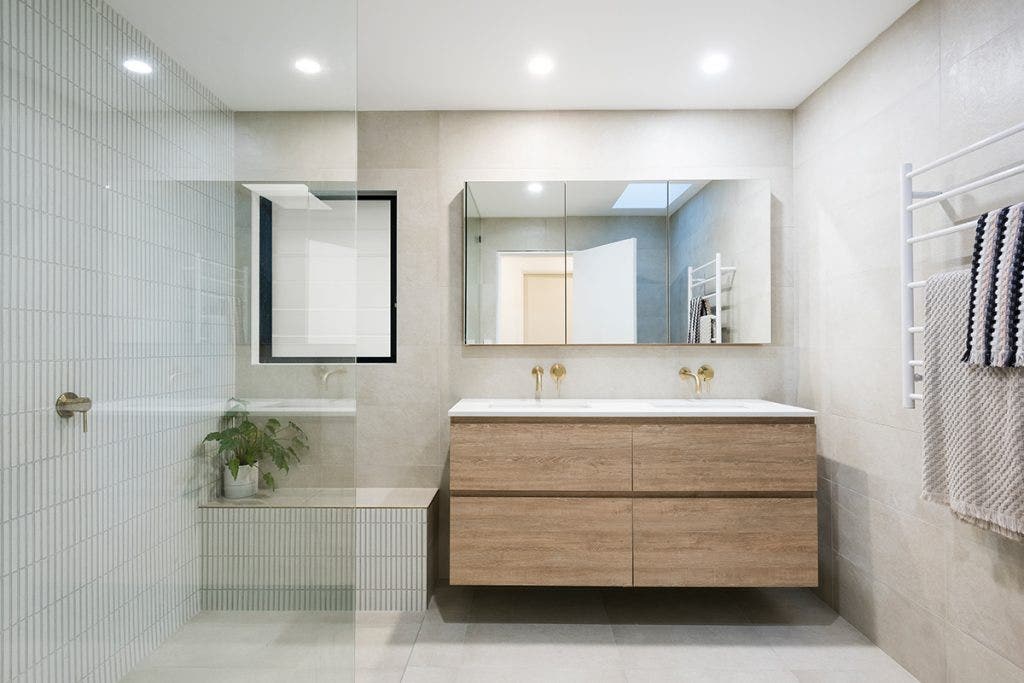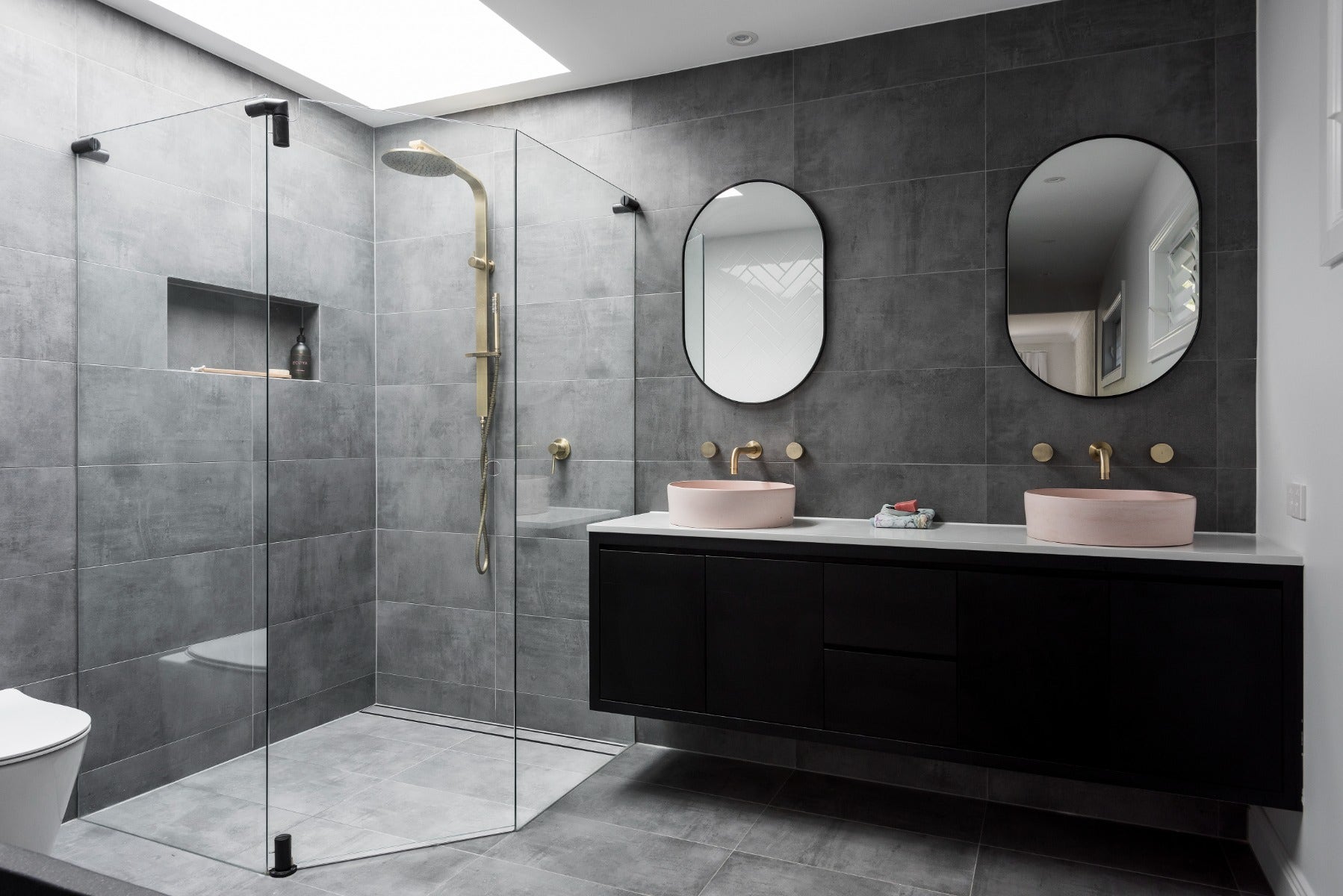DIY Advice
How to Demolish a Bathroom for Renovation
10.04.24
Tired of staring at that cracked green toilet seat and a shower curtain covered in questionable stains? Maybe those tiles remind you of your grandma's house, but not in a good way.
If any of this sounds familiar, demolition day is calling your name! It's the first step toward creating a bathroom you actually look forward to using.
Before jumping in, remember that a proper demolition sets you up for a smoother renovation down the road. It's your chance to uncover potential issues behind those walls and lay the foundation for your new layout.
In this guide, we'll break down bathroom demolition into seven manageable steps, giving you the confidence to tackle the work.

Step 1: Planning and Preparation
Before picking up a tool, check in with your local council regarding renovation permits. Requirements vary from place to place. While small cosmetic changes might be okay, major plumbing or structural work usually requires approval.
Once you have the go-ahead, it may be tempting to grab the sledgehammer and let loose. But before a hasty start, a simple demolition plan is your best friend. This guide is a good place to start if you're unsure how to plan the demolition works.
Another element of the planning stage is getting the right tools. Essentials include:
- Hammer: Various sizes for different tasks.
- Crowbar and pry bar: For prying off tiles and stubborn fixtures.
- Screwdrivers: For removing screws from fittings and fixtures.
- Reciprocating saw: Powerful for cutting through walls and joists.
- Power tools:
- Drill/impact driver: Useful for removing screws and drilling holes during demolition and construction.
- Hammer drill: This makes removing tile significantly easier, especially on concrete floors.
- Jigsaw: This can be useful for precise cuts in various materials.
- Oscillating multi-tool: Versatile for smaller cuts in hard to reach areas during different stages of the demolition.
- Safety goggles: Essential eye protection.
- Dust mask: Protects your lungs from dust.
- Gloves: Protect hands from cuts and debris.
- Sturdy shoes or boots: To safeguard your feet.
Power tools can save time and labour but also require extra safety precautions. If you don't own power tools, consider renting specialised tools for a day or two.
Step 2: Disconnecting Utilities
- Water: Turn off the water for the entire house (at the water metre). Then, run the taps to drain any remaining water from the pipes.
- Electricity: Switch off the breaker for your bathroom at the circuit breaker box, lock the breaker out, and tag it so no one can switch it back on while you're working. Double-check that the power is off by testing switches and outlets.
- Gas: If your bathroom has gas lines for heating or hot water, always call a licensed gasfitter. Improper disconnection can be extremely dangerous!
Step 3: Salvaging Fixtures
Think twice before throwing everything out! You may be able to sell some old bathroom fixtures or reuse them in other parts of your home.
Vintage basins, toilets, and bathtubs made from cast iron or porcelain can be worth saving. Unique light fixtures or vintage taps are sometimes sought after.
Take your time removing fixtures you want to salvage to avoid breakage. Using the right tools and researching how the fixture is attached reduces the risk of damage.
Every cent saved or made by reselling counts, especially for larger projects!

Step 4: Stripping Out Fixtures and Fittings
It's time to clear out your bathroom! Start with easy-to-remove items and progress towards the big ones:
- Accessories: Remove towel racks, shelves, soap dishes, and mirrors. Some can be unscrewed, while others may need a gentle pry with a crowbar.
- Vanity removal: Disconnect the plumbing under the sink and carefully remove the vanity countertop. Depending on how it's attached, the vanity cabinet can usually be pulled away from the wall. If the countertop is stuck, try loosening stubborn screws with pliers or applying some WD-40.
- Taking out the toilet: Loosen bolts at the base, disconnect the water supply line, and carefully lift the toilet. Temporarily cap off any waste pipes to prevent sewer smell.
- Bathtub and shower: These are often the hardest. Here's how to tackle it:
- Shower fixtures: Start by removing showerheads, faucets, and handles. These usually are attached with screws or bolts.
- Shower enclosures: Removing glass shower doors or screens can be tricky. Start by disconnecting them from any hinges or framing. For safety, use suction cups designed for handling glass, and ideally, get a helper to lend a hand to avoid breakage.
- Built-in bathtubs: After removing any surrounding tile or walls, these often require a bit of force to lift and remove. If possible, ask a friend for a hand, and your back will thank you!
- Tip: Keep your demolition waste organised as you go (general waste, recyclable, hazardous materials) to make disposal easier later on.
Step 5: Tearing Out Walls and Flooring
This is where the transformation becomes more visible! Just remember, safety comes first for this part of the demolition process!
- Tile removal: Removing tiles is definitely a more time-consuming job, but it is very rewarding! To loosen tiles, try a grout removal tool. Start at the edges and work your way inwards. A hammer and chisel are your basic tools, while a power tool like a hammer drill can speed things up.
- Demolishing walls: If you're removing entire walls, make sure they're not load-bearing! If you're unsure, you may need to get a builder to come and look. For non-structural walls, you can usually start at the top and remove the wall sheeting, followed by carefully removing studs one by one.
- Floor removal: Start by removing any baseboards and trim. Depending on your subfloor, you might pry up tiles or use a tool designed specifically for floor removal. Concrete subfloors may require more specialised tools.
Before tackling large sections of wall or floor, remember:
- Older homes can contain asbestos in tiles, adhesives, or wall materials. If you're not sure about this, consult a professional immediately.
- Significant mould might require specialised work to remove safely.
- Always wear safety gear, including goggles, masks, sturdy shoes, gloves, and
Step 7: Final Inspection and Preparation
By this stage, most of the demo work is complete! Before the rebuild starts, give your bathroom a final walkthrough.
- Check for issues: Look for leftover plumbing problems, signs of mould, or damaged subfloor. Address these before the renovations continue to save yourself headaches later.
- Prepping the workspace: Give the space a final sweep, removing any remaining debris and patching holes if needed. Now, you have a clean slate to start building your brand-new bathroom.

Ready, Set, Renovate!
Great work on tackling the demolition phase! Keep the momentum going and dive into designing your new dream bathroom.
Need some more guidance on "how to demolish a bathroom for renovation in 7 steps"? Amber is here to answer all your questions!
From stunning tiles to high-quality bathroom fixtures, we bring your vision to life.
Let our team help with:
- Expert advice: We answer your questions and guide your material selections.
- Design inspiration: Explore endless possibilities to spark your creativity.
- Quality products: Build a bathroom that's both beautiful and built to last.
Your old bathroom is history. Let's create your new bathroom story! Contact us or pop into one of our showrooms, and let's get this renovation started.
FAQs About How To Demolish a Bathroom for Renovation
How Do You Tear a Bathroom for Remodelling?
Bathroom demolition starts with a plan. Disconnect utilities first (water, gas, electricity), then remove fixtures and fittings and finally tackle walls and floors if needed.
Safety is key—make sure utilities are off and always wear protective gear. Consult a professional if you have any concerns, especially for complex plumbing, electrical work, or dealing with potential hazards.
What Is the Correct Order To Remodel a Bathroom?
How Long Does It Take To Rip Out and Refit a Bathroom?
The timeline depends on your project's scope and how much free time you have. Small, cosmetic updates might take a couple of weeks, while larger renovations involving structural changes can take 4-6 weeks or more.
Careful planning, working with experienced contractors, and being flexible about potential delays help minimise renovation time.

